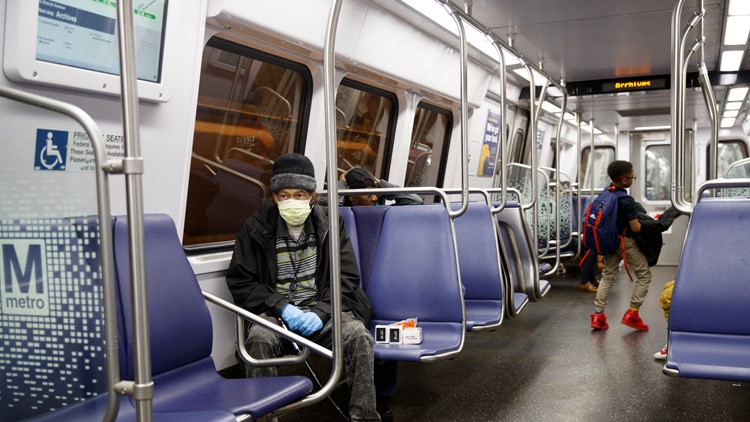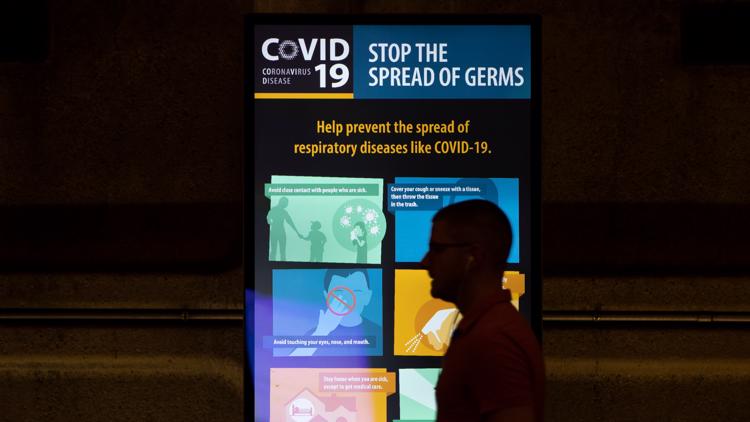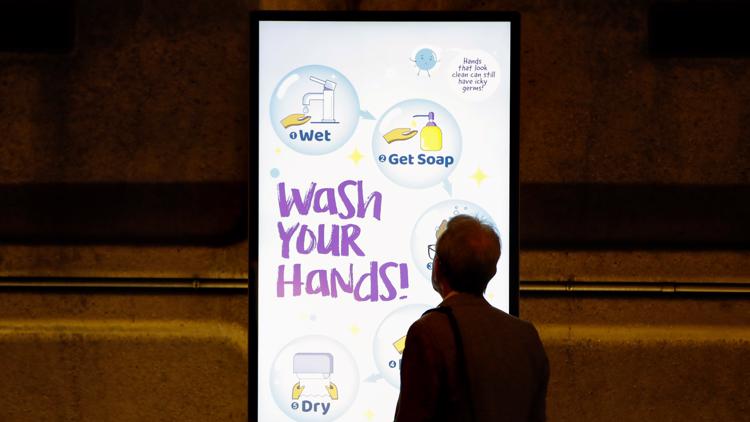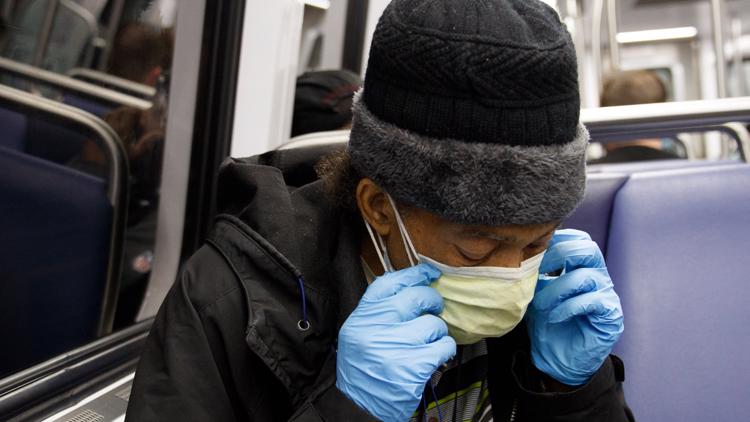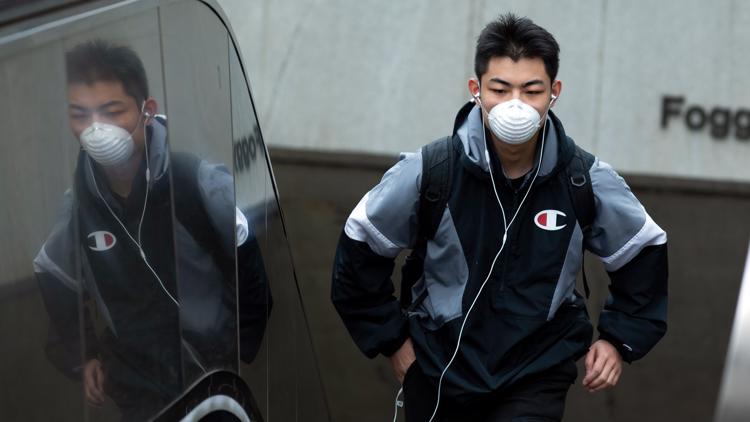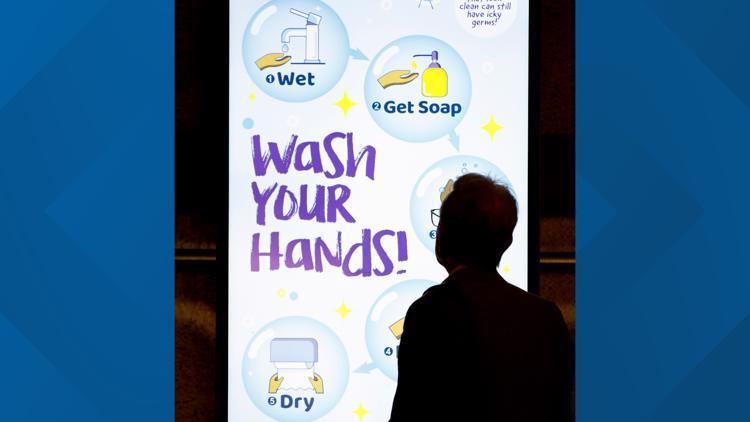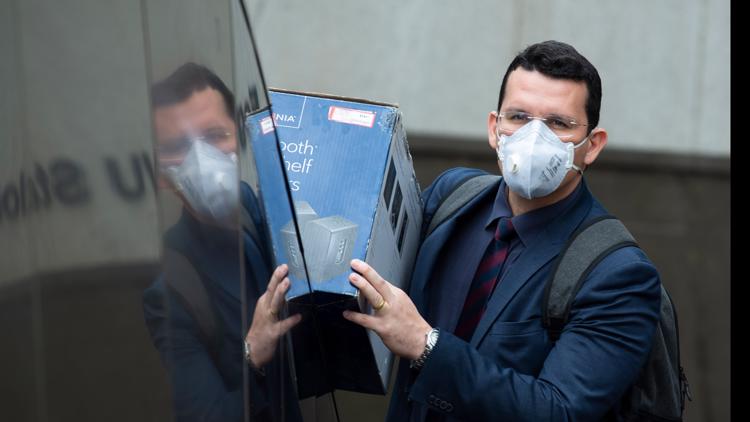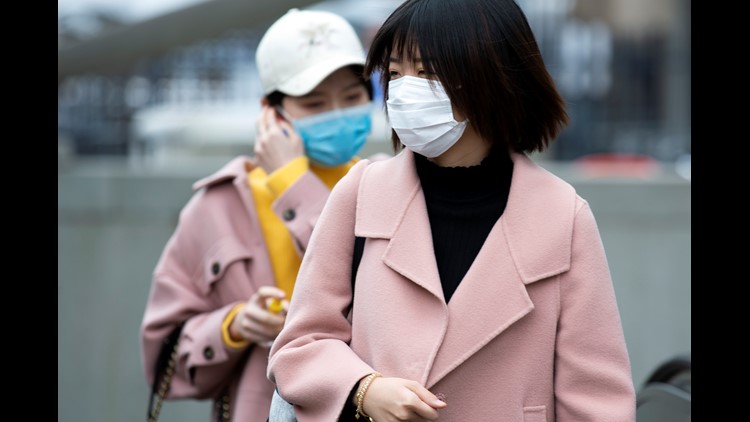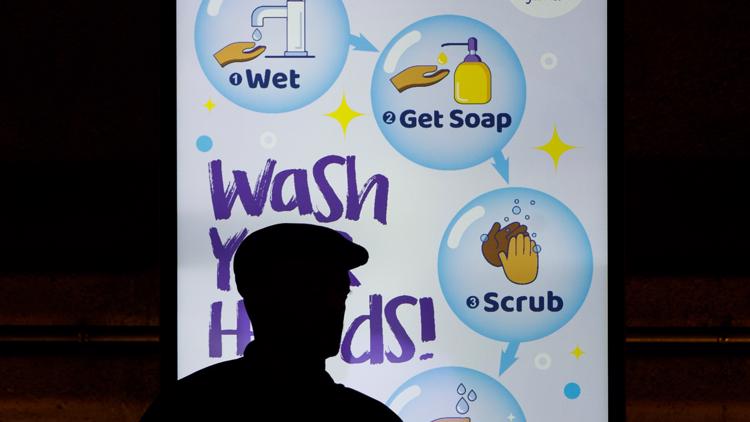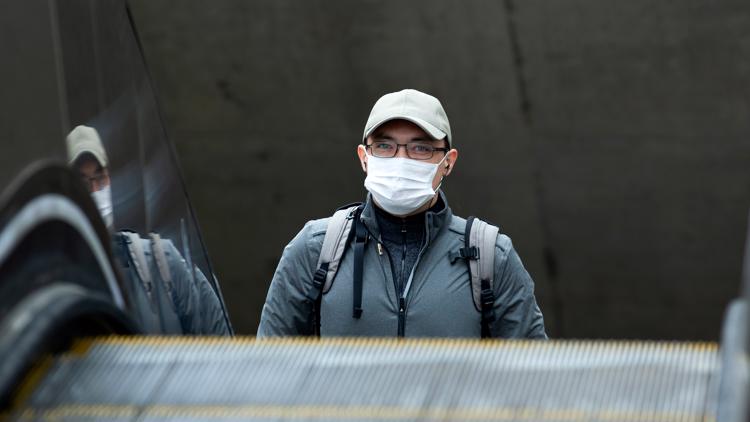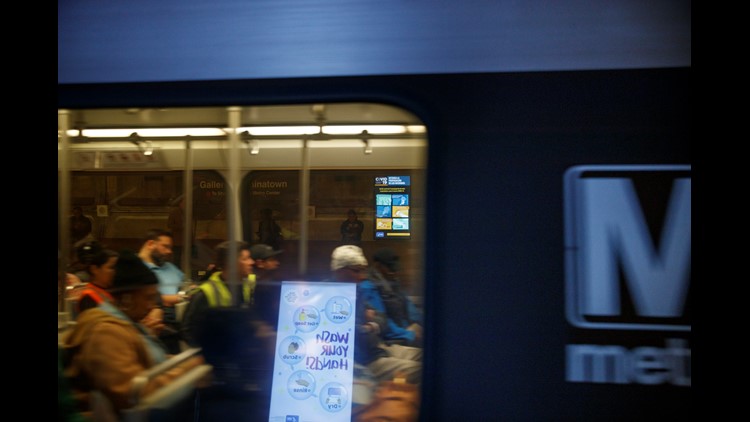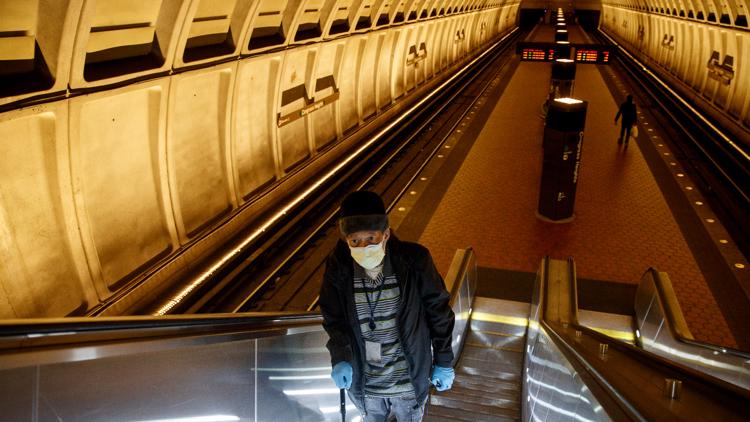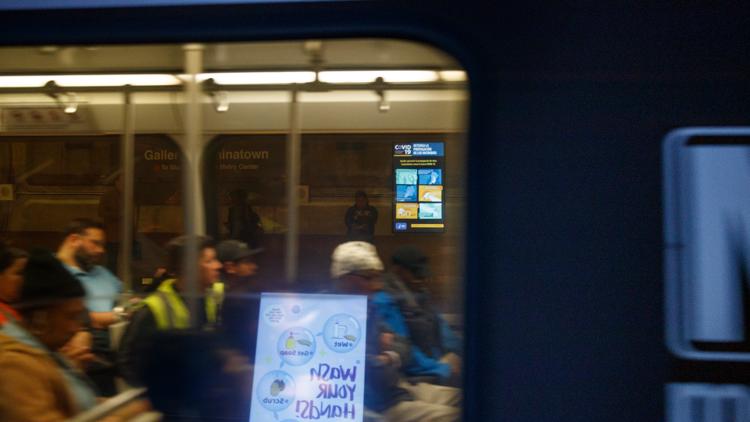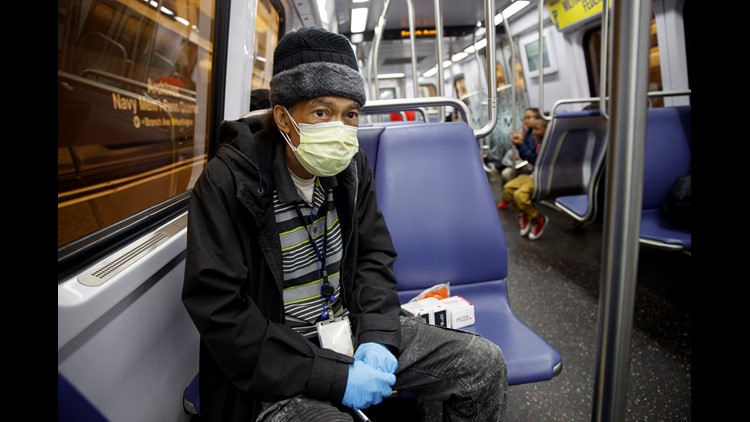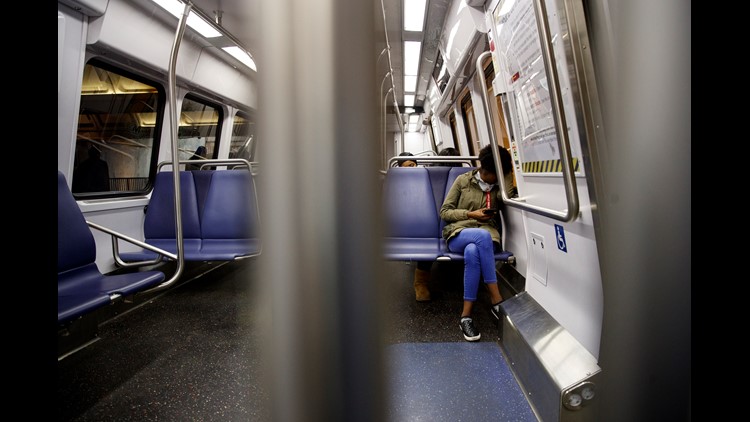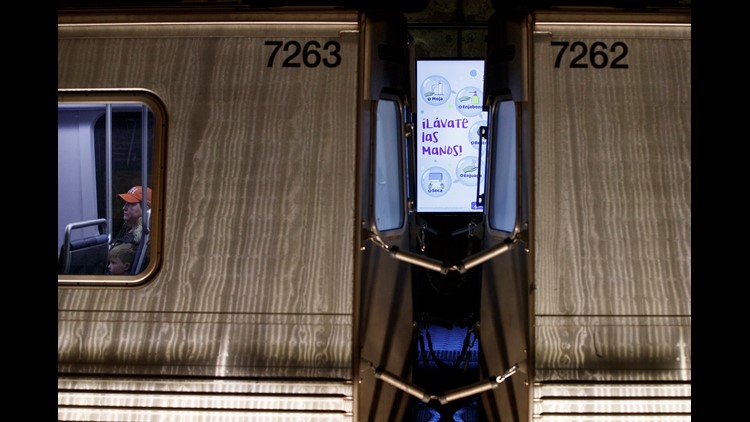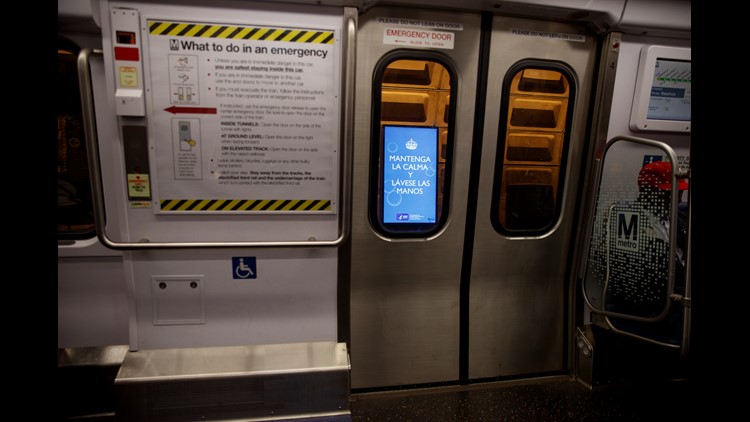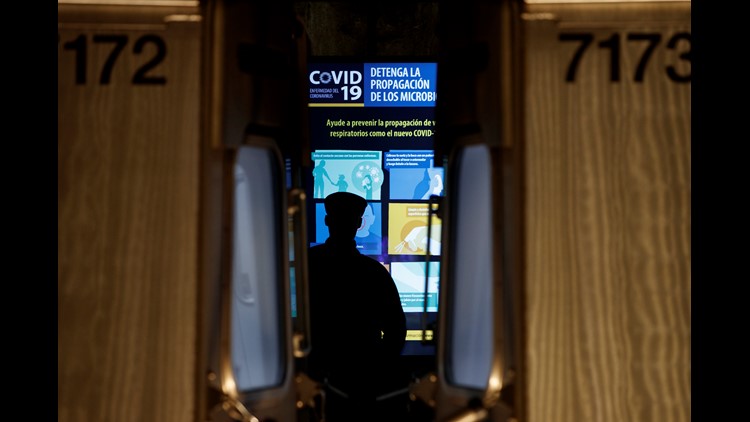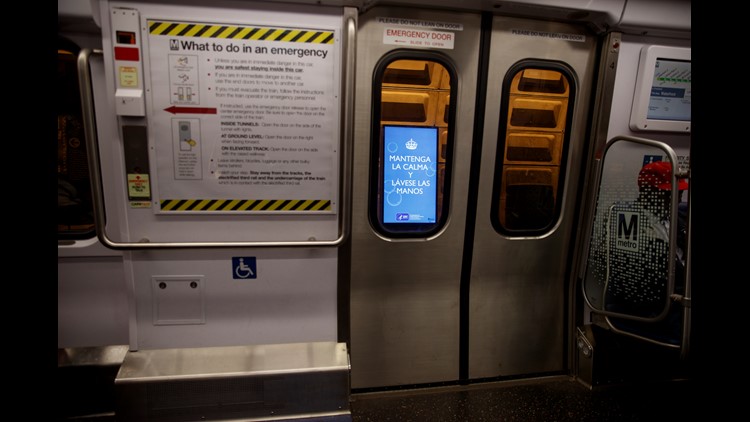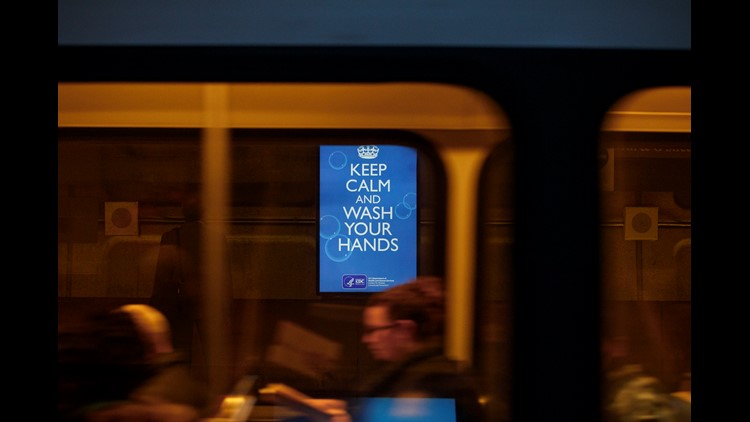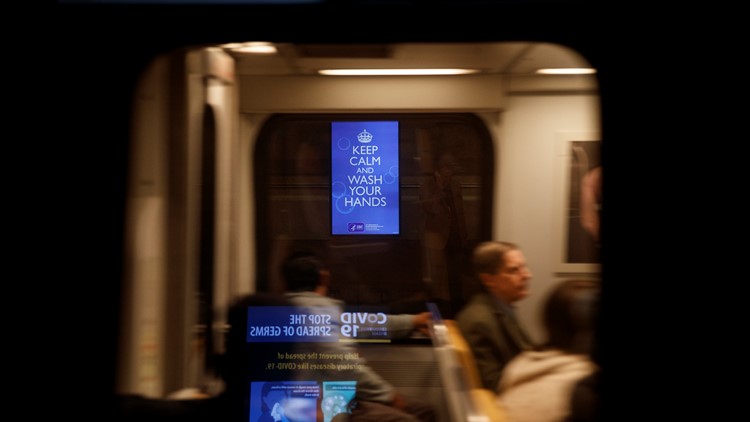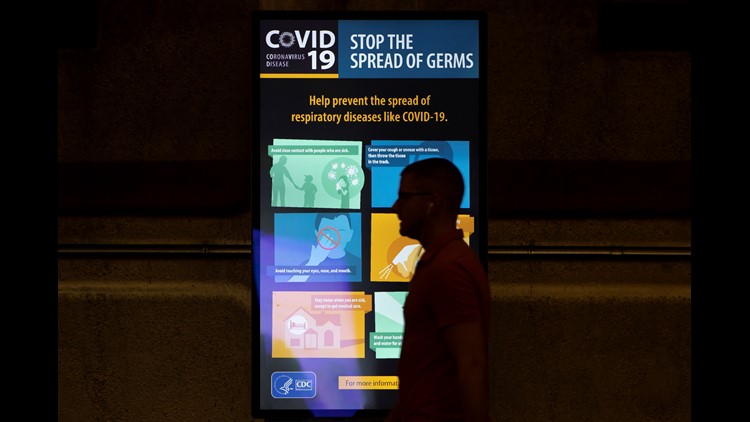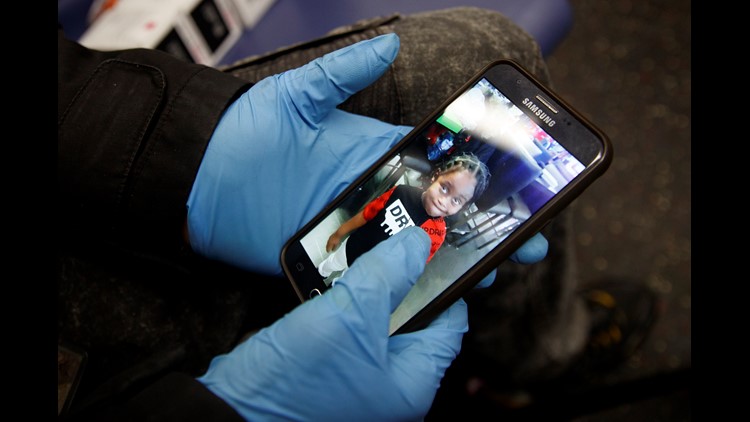WASHINGTON — When you go on D.C.'s Metro during the coronavirus outbreak, you may see a few things that are different and a few fewer people, but more with masks.
Pictures from The Associated Press show that people are wearing masks, and with the anticipated reducing service that starts Monday, March 16, fewer people will be seen on the Metro.
People have been seen wearing double masks, fewer people are riding the rail system and signs are published to help enhance good hygiene practices.
According to WMATA, trains will operate every 12 minutes on each line throughout the day on Monday through Friday from the standard hours of 5 a.m. to 11:30 p.m.
Metro during the coronavirus
On Saturdays, trains will operate every 12 minutes with service from 7 a.m. to 1 a.m., and on Sundays, trains will operate every 15 minutes from 8 a.m. to 11 p.m.
Metro bus systems will operate on a Saturday schedule on the weekdays, and weekend bus schedules are unchanged.
WMATA also said that if you are not feeling well, "do not take public transportation." It has also suspended Metro's Rush Hour Promise.
Metro announced they are preparing for Phase 3 of their Pandemic Plan in response to coronavirus cases in D.C., Maryland, and Virginia area, Metro officials said during a special board of directors meeting Thursday morning.
In preparation for Phase 3, Metro officials said they will work toward evaluating potential options for alternate or reduced service options and will continue to implement Phase 2.
Metro officials said that a change in employee absenteeism could trigger a change in service, but Metro’s Chief Medical Officer Dr. Amy Espy-Smith underscored that employee absences remain normal. Metro General Manager Paul Wiedefeld once again reaffirmed his policy of safety over service and said that Metro “will have to adjust as this evolves.”
On March 7-8, Metro initiated Phase 2 of their plan stressing that the transit agency has ramped up and ordered extra cleaning of some vehicles. They have since stocked up 25 percent more supplies, communicated with local and federal authorities on developments, and are tracking ridership.
Metro during the coronavirus
Metro spokesman Dan Stessel said that Metro has seen a “drop off” in ridership in the last week — roughly 100,000 fewer riders from last Wednesday to this Wednesday, he said. Metro officials insist that any changes to service would not be triggered by changes in ridership figures, even though Stessel said that Metro could lose 40 percent of its daily ridership if a telework order is handed down to federal government employees.
Metro officials are encouraging customers who think they are ill or may have the coronavirus to find an alternate mode of transportation instead of using public transportation. Metro spokesman Dan Stessel said the transit agency cannot perfectly protect all riders from the spread of disease. They urge customers to continue to take the necessary precautions in protecting themselves as they work to keep vehicles and commonly touched Metro surfaces clean.
The transit agency said it is continuing to provide more hand sanitizer to front line employees such as bus operators who may not have regular access to bathrooms while on the job.
Metro's Task Force is meeting every day to assess recent developments of the coronavirus within the D.C. area.



